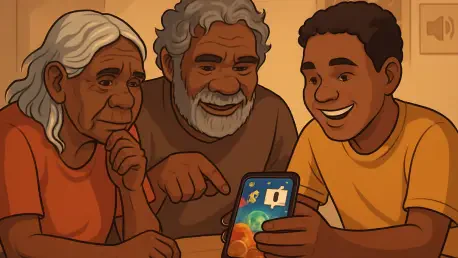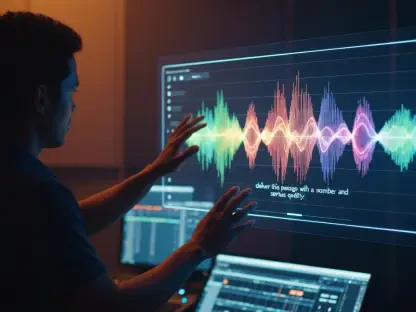When a language counts just eight fluent speakers and most teens spend more than two hours a day on their phones, the fastest bridge between elders and youth often looks less like a classroom and more like a game that fits in a pocket. The Nyiyaparli Living Language Project answered that reality by building a junior-ranger mobile game that slips roughly 90 words—recorded by elders—into the same daily scroll that usually belongs to shooters and puzzles. It aimed not at novelty but at habit, turning swipes and taps into practice sessions that echo real places and duties on country.
The hook is simple and urgent: phones are already everywhere, while fluent speakers are not. By meeting young people where they play, the project converts routine screen time into repetition, pronunciation, and recall, anchoring each word to landforms, kinship, and seasonal work that matter beyond the screen.
Why This Story Matters Now
Aboriginal languages across Australia face steep losses after generations of disruption, and formal teaching resources remain limited or uneven. Community-led tools have stepped into that gap, building from what is documented and reclaiming what can be shared safely. In this setting, mobile-first is pragmatic rather than flashy: low-bandwidth play, offline access, and quick feedback loops make vocabulary stick without adding cost or travel.
Cultural continuity sits at the center. Words in Nyiyaparli carry place names, ecological knowledge, and kinship patterns; losing them can mean losing a map of country. Embedding language inside a ranger storyline folds stewardship into learning, so each task reinforces identity as well as memory.
Inside The Project
Led by the Karlka Nyiyaparli Aboriginal Corporation, the game casts players as junior rangers working across the Fortescue Marsh Nature Reserve. Tasks include reading tracks, naming waterholes, and sorting tools, each tied to a focused set of words. Audio prompts from elders guide pronunciation, with slow-play and repeat options that support learners at different speeds.
Game mechanics do heavy lifting: micro-goals, spaced repetition, and short sessions drive retention without forcing long study blocks. Categories—landforms, animals, tools, kinship, and everyday verbs—create a usable core. The app runs offline on modest devices, a critical decision for remote users who share data or service.
Voices From The Community
Authentic sound is the spine. “When they hear our voices, they hear the old people walking with them,” an elder said during a recording session, emphasizing how tone and cadence carry authority that a text list cannot. Protocols guide what is recorded and what remains private, respecting seasonal knowledge and sensitive terms.
Young players report that the mix of challenge and reward feels familiar. “It’s like Fortnite but it’s our words,” a teen said after a ranger-station trial where peers clustered and corrected one another on tricky consonants. Parents notice spillover at home: “My kid teaches me words now,” one carer said, describing evening rounds where siblings try to outdo each other’s recall. A project lead framed the design choice plainly: “We designed for the phones kids already use, not the classrooms they might miss.”
How The Model Scales
Early traction brought grants and recognition, underwriting more content and infrastructure. Plans include a digital language center to store recordings, manage permissions, and seed future apps. Indicators that matter—daily active users, session length, repeat word accuracy, and family co-play—now guide new builds and quarterly content drops.
The approach aligns with broader efforts. A science storybook app in Ngalia, a language with only three speakers, pairs elder-led audio with a concise lexicon, echoing the principle that small, high-quality sets outperform sprawling lists. Dictionary work by Kabo and Talbot Muir underpins both accuracy and pedagogy, proving that documentation and interactivity strengthen each other when they move in tandem.
What Comes Next
The next steps favored community control and practical scale. Teams stood ready to expand the core word bank to seasonal modules, train local editors to manage updates, and link gameplay data with classroom units without compromising privacy. Developers mapped a steady cadence—quarterly reviews with youth testers, community sign-off on new recordings, and analytics tuned to pronunciation attempts and recall rather than vanity metrics.
Sustaining momentum depended on partnerships that bridged culture, education, and land care. By aligning with ranger programs and schools, the project positioned language not as a subject but as a tool used in daily work. The model had pointed a way forward: documentation first, elder audio as foundation, small word sets tied to place, and mechanics that fit everyday screens. With those pieces in place, the path toward stronger language use looked less like a rescue mission and more like a routine—played, heard, and spoken back into life.









